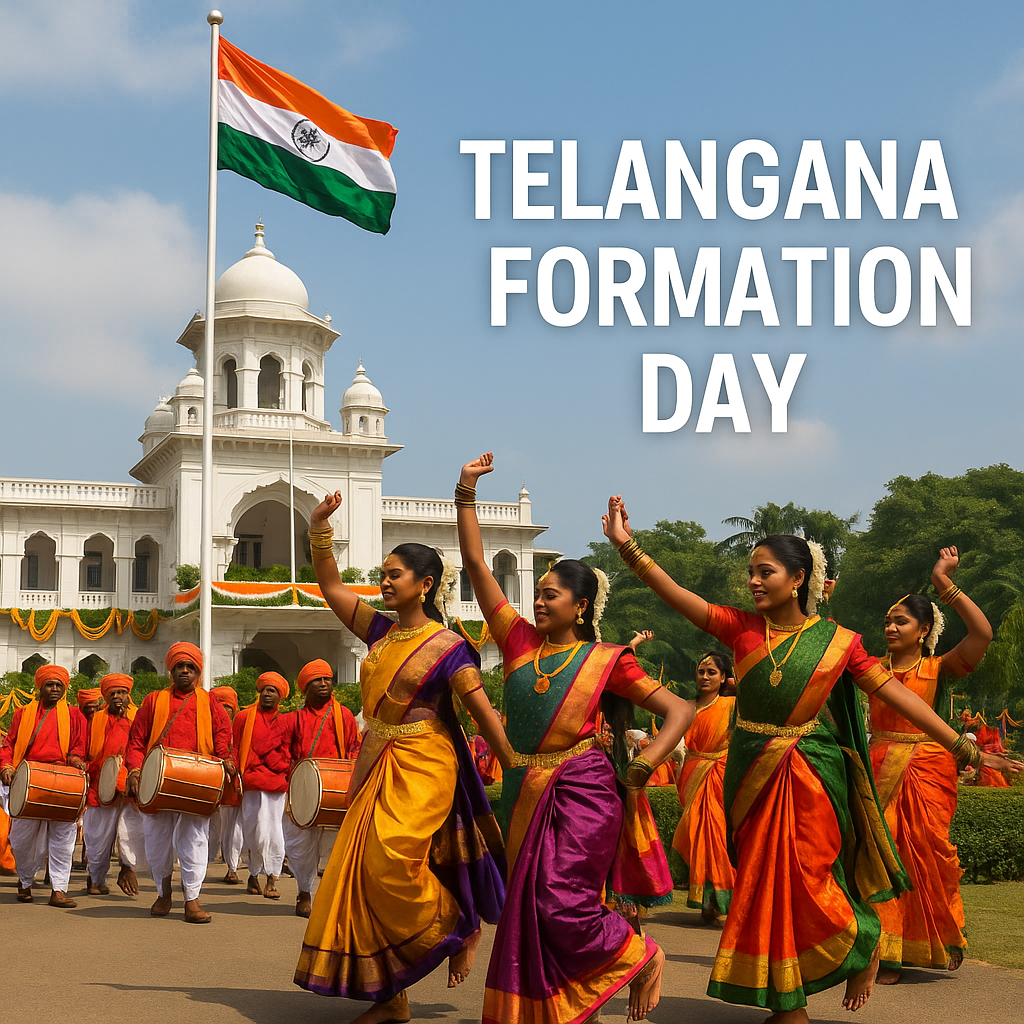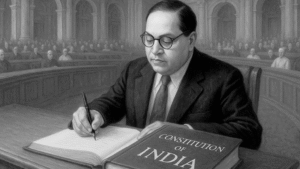Telangana Formation Day: A Historic Journey of Struggle, Identity, and Statehood
On June 2nd every year, the people of Telangana proudly celebrate their Statehood Day, a reminder of their long and resilient fight for a separate identity. The creation of Telangana as the 29th state of India in 2014 was the result of nearly six decades of socio-political struggle, mass movements, and emotional appeals for regional autonomy.
In this blog, we’ll walk through the history, significance, timeline of events, and celebrations of Telangana Formation Day—an event that has altered India’s political geography and empowered millions.
📜 The Historical Background of Telangana
The roots of the Telangana movement date back to 1 November 1956, when the region merged with Andhra Pradesh to form a unified Telugu-speaking state, following the recommendations of the States Reorganisation Commission. This new state was carved from the former Madras Presidency.
However, the union was not smooth. Telangana, formerly part of the princely Hyderabad State, had distinct socio-economic and cultural dynamics. Over time, regional disparities grew, especially in terms of water resources, employment, education, and political representation.
🔥 The First Major Agitation: 1969 Telangana Movement
By 1969, dissatisfaction had boiled over. Students, government employees, and social organizations led a mass agitation demanding separate statehood for Telangana. This movement marked a significant chapter in the region’s history:
- Thousands of students protested under various student unions.
- Government employees boycotted work in support.
- Several protesters lost their lives during clashes with the police.
Despite the movement’s momentum, no immediate solution was provided, and the unrest remained unresolved.
⚖️ The Second Wave: Andhra vs. Telangana in the 1970s
In 1972, another wave of protests emerged in coastal Andhra demanding equal rights, leading to a political compromise—but the core demands of Telangana remained unmet.
From the 1980s onwards, regional political parties like the Telangana Rashtra Samithi (TRS) kept the flame alive, and the demand slowly gathered national attention.
📅 The Path to Statehood: 2000s to 2014
The movement regained strength in the 2000s with massive public participation. After decades of activism, the Indian Parliament finally took concrete steps.
Key milestones in the road to Telangana:
- December 2009: The Indian government announced the process of forming Telangana had begun.
- February 2014: The Telangana Bill was passed by the Lok Sabha, supported by the Congress Working Committee and Bharatiya Janata Party (BJP).
- March 2014: The Andhra Pradesh Reorganisation Act was approved.
- June 2, 2014: Telangana officially became the 29th state of India, with Hyderabad as its joint capital (shared with Andhra Pradesh for 10 years).
🗺️ The Birth of a New State
The new state was formed with 10 districts in north-western Andhra Pradesh. Today, Telangana has grown to include 33 districts after administrative reorganization.
The formation of Telangana is more than just redrawing boundaries. It represents:
- The victory of democratic activism
- Recognition of regional aspirations
- Empowerment of local identity and self-governance
Telangana’s birth is one of the most peaceful statehood movements in India—showing how persistent, non-violent democratic pressure can bring systemic change.
🎉 How Telangana Formation Day is Celebrated
Every 2nd June, the state comes alive with grand celebrations and heartfelt pride:
- Flag hoisting ceremonies at government offices and schools.
- Cultural programs showcasing Telangana’s rich traditions, music, and dance.
- Special addresses by the Chief Minister, and tributes to those who contributed to the movement.
- Wishes pour in from across India, including from the Prime Minister and President.
🛤️ Achievements Post-Statehood
Since 2014, Telangana has seen remarkable progress:
- Ranked among India’s top states in Ease of Doing Business
- Pioneered projects like Mission Bhagiratha (drinking water) and Rythu Bandhu (farmer welfare)
- Witnessed a boom in IT, infrastructure, and agriculture
Hyderabad continues to be a global city, attracting investments and serving as a model for urban governance.
🧠 Why Telangana’s Story Matters
The formation of Telangana is a powerful example of how regional voices, when organized and persistent, can influence national decision-making. It also reflects India’s federal spirit, where diversity and decentralization are celebrated.
From discontent in 1956 to hope in 2014, Telangana’s journey is one of resilience, unity, and vision.
🌐 important Link:
Conclusion:
Telangana Formation Day is not just a celebration of statehood; it’s a celebration of identity, democracy, and determination. As the state continues to grow and shape its future, the memory of the 57-year-long struggle stands as a testament to the people’s will and India’s democratic spirit.
Happy Telangana Formation Day! Jai Telangana! 🇮🇳
Share this content:














Post Comment